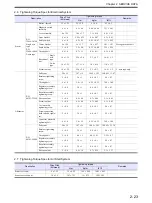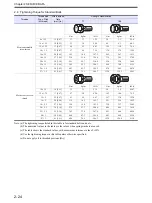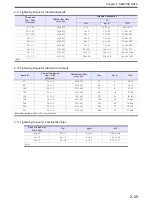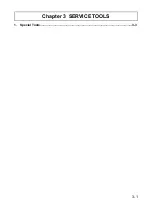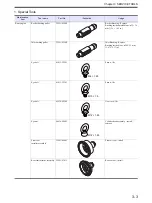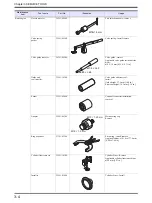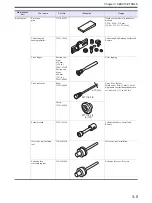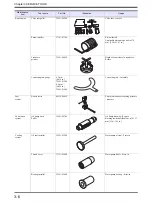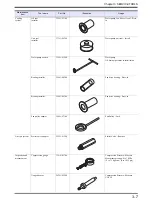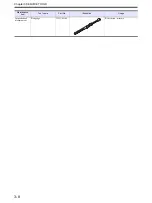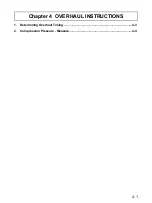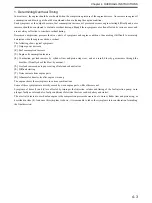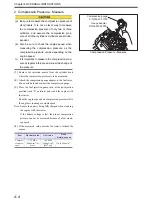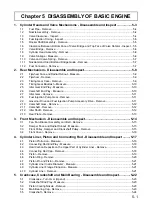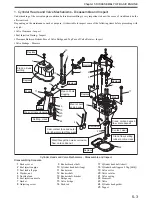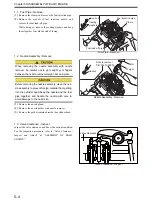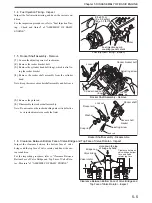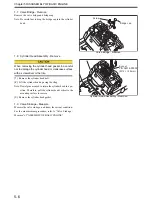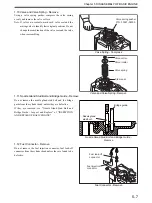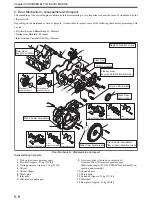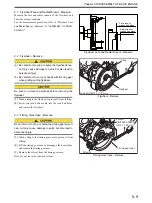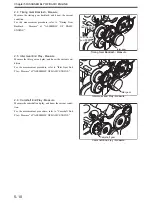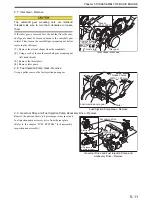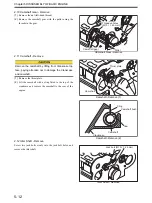
4-3
Chapter 4 OVERHAUL INSTRUCTIONS
Chapter 4 OVERHAUL INSTRUCTIONS
1. Determining Overhaul Timing
In most cases, the engine should be overhauled when the compression pressure of the engine decrease. An increase in engine oil
consumption and blow-by gas should be considered when evaluating the engine condition.
Such symptoms as the output decrease, fuel consumption increase, oil pressure decrease, engine starting difficulty and noise
increase should be considered to evaluate overhaul timing, although these symptoms are often affected by various causes, and
are not always effective to consider overhaul timing.
Decreased compression pressure shows a variety of symptoms and engine conditions, thus making it difficult to accurately
determine when the engine needs an overhaul.
The following shows typical symptoms:
(1)
Output power decrease
(2)
Fuel consumption increase
(3)
Engine oil consumption increase
(4)
Combustion gas leak increase by cylinder liner and piston ring wear, and as a result, blow-by gas increase through the
breather. (Visually check the blow-by amount.)
(5)
Gas leak increase due to poor seating of inlet and exhaust valves
(6)
Difficult starting
(7)
Noise increase from engine parts
(8)
Abnormal exhaust color after engine warm-up
The engine shows these symptoms in various combinations.
Some of these symptoms are directly caused by worn engine parts, while others are not.
Symptoms of items (2) and (6) are affected by improper fuel injection volume and timing of the fuel injection pump, worn
plunger, faulty nozzles and also faulty conditions of electrical devices such as battery and starter.
The most valid reason to overhaul an engine is the compression pressure decrease due to worn cylinder liner and piston ring, as
described in item (4). And once this symptom is shown, it is reasonable to take other symptoms into consideration for making
the final decision.
Summary of Contents for S12A2
Page 1: ...SERVICE MANUAL September 2010 Pub No 99269 20170 199269 20170 ...
Page 2: ......
Page 16: ......
Page 20: ......
Page 42: ......
Page 44: ......
Page 68: ......
Page 69: ...3 1 Chapter 3 SERVICE TOOLS 1 Special Tools 3 3 ...
Page 70: ......
Page 78: ......
Page 82: ......
Page 136: ......
Page 174: ......
Page 218: ......
Page 220: ......
Page 242: ......
Page 244: ......
Page 294: ......
Page 310: ......
Page 320: ......
Page 322: ......
Page 334: ......
Page 354: ......

